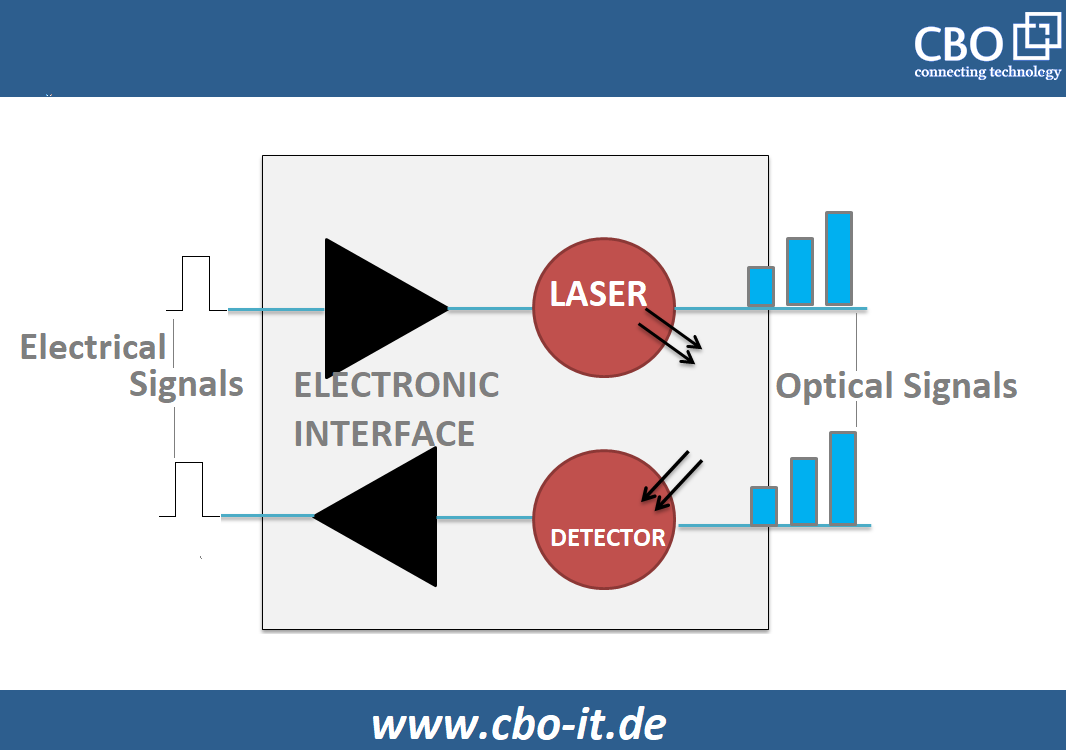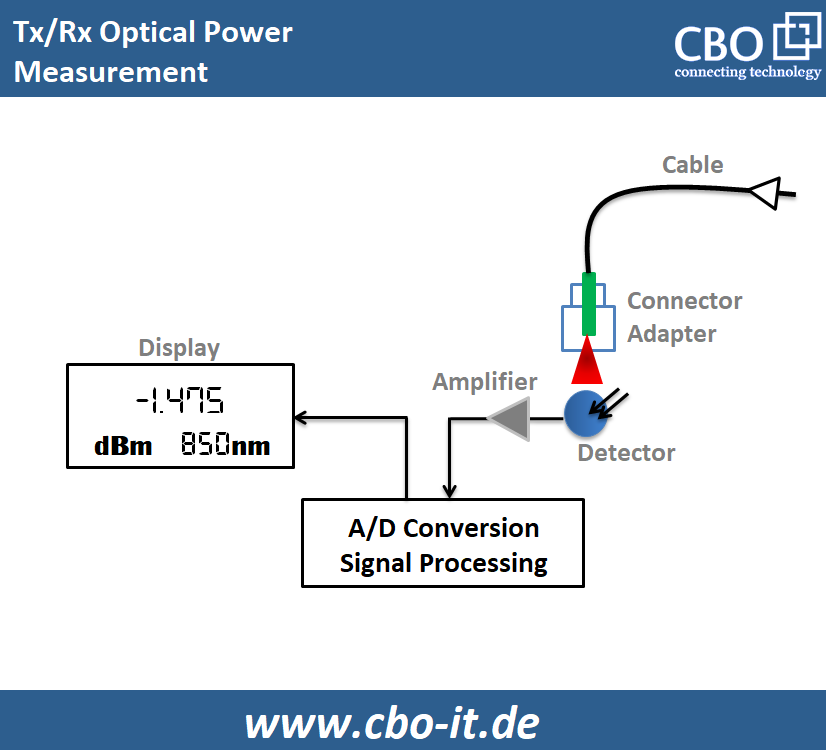The RX and TX optical power are two, very important parameters of optical transceivers. The optical power at both the transmitter and the receiver end of a transceiver should be within the vendor-defined, correct operating range. Discrepancies in TX/RX optical power indicate that there is some issue with either the cabling or the transceiver itself.
How Optical Transceivers Work?
The optical transceivers come equipped with both – a transmitter and a receiver in a parallel configuration. Thus, the transmitter and the receiver of an optical module can operate independently using their circuitry. The transmitter is deployed at the electrical side as it receives an electrical signal through its electrical interface and converts the received signal into an optical signal before forwarding it through the connected optical fiber cable. A similar process takes place in the receiver but in the opposite order. The following exhibit is showing the working principle of optical modules!
The light signal received at the receiver end of a transceiver is detected by a detector that converts the light signal into an equivalent electrical signal and then the electrical signal is forwarded to the host port through electrical interference of the module. Today, we have several kinds of optical modules available. The classification of these modules can be done based on the form-factor, achievable link distance, bandwidth, etc. however, the working principle of all the optical transceivers is almost identical as the conversion of electrical to optical signals and optical to electrical signals is something that remains unchanged across the various types and versions of optical transceivers.

Why is the TX/RX Optical Power Important?
First of all, let us clarify that the TX and RX refer to Transmit and Receive respectively. The RX (receive) optical power can also be termed as the input optical power of the transceiver and the TX (transmit) optical power is known as the output optical power. These two parameters are very crucial as the transceiver's capability and range depend on the available optical power at both; receiving and transmitting end. As we all know, optical transceivers send or receive data in form of light. Thus, any shortfalls in the available optical power could affect its operability and transmission efficiency.

How to Measure TX/RX Optical Power?
Measuring TX/RX power is not a big issue as most optical transceivers come with an integrated, monitoring system through a transceiver’s DDM interface, you can keep a track of the optical power at both the transmitter and the receiver end on a real-time basis. In the following exhibit, you can see the parameters that can be monitored through the DDM (Digital Diagnostic Monitoring) interface of an optical transceiver. Here, it is important to understand that the information about the optical power and other parameters can only be relayed by an optical transceiver if it is designed with a built-in DDM system.
In case if you are unable to access the diagnostics interface of your module then you can use a portable optical power meter as well. Optical power meters are considered as primary instruments. With an optical power meter, you will be able to test the available power at the transmitter or the receiver end. For measuring the actual losses and to verify the integrity of your optical cables you can consider investing in optical time domain reflectometers (OTDRs) or optical loss test sets (OLTSs) as also. Optical power meters are very simple to use and even an entry-level networking technician can use this equipment safely. Please check the following exhibit to understand the principle of optical power meters.
Possible reasons behind low RX Power
Low RX power does not indicate a faulty transceiver every time as there can be multiple reasons behind this issue. Yes! Degraded or faulty transceivers cannot be ruled out but it happens only occasionally. Being a network technician or engineer, you should have the required level of skills, knowledge, and understanding to deal with the low TX or RX issue. Following is some useful information about the most common causes that often cause degradation in optical signals and as a result, issues like low RX or TX power evolve;
- Too many bends in the cable
- Bad terminations
- Improper optical welds
- Faulty TOSA (transmitter optical sub-assembly)
- Module chip not performing as desired
- Lose welding of LD+ and LD- PINs
- Blow resistors or capacitors
- Issues with onboard electronics
Conclusion
- Monitoring of The RX and TX optical power is quite an important thing
- Check your cable farm for faults if you are experiencing low optical power at one or multiple optical modules
- Low RX or TX power is sometimes experienced because of a transceiver with manufacturing faults – claim warranty without trying to dismantle the module
- Optical power meters offer simple and straightforward measurements across cables
- Prefer. Transceivers with integrated DDM for real-time based monitoring of RX and TX optical power.
 English
English
 Deutsch
Deutsch
 Espaniol
Espaniol










